Aquariums: Underwater Art
My Experience + 3 Unique Designs
One day, during 2020’s long quarantine, I looked around my bedroom and felt dissatisfied. It was a typical teenage boy’s bedroom: neutral colored walls, a black computer, trinkets and trophies clustered on bookshelves, pictures on the wall, and a navy blue comforter. But I could not identify a single object that was made from my hands, or inspired by my own creativity. I’m not an artist, nor an avid lego builder, but I do hold creative potential. I just needed an outlet. That’s when I had an epiphany; I would start a project that would decorate my room, harness my creativity, and satisfy my fascination with nature. I began the process of creating my own living aquarium. Before I dive into some design concepts for new aquariums, I will show you how I designed my very own.
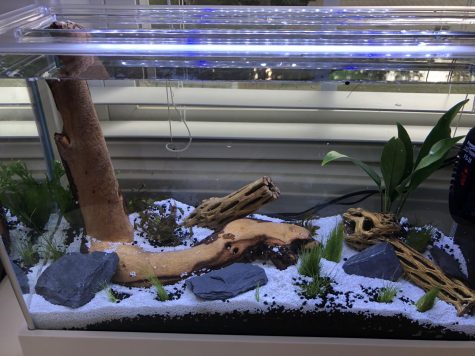
My inspiration came from nature. I only wanted natural decorations, such as rock and wood, and living plants. I filled the bottom of the tank with both black and white substrate (soil), which supports root growth and provides nutrients for the aquatic plants. I then found the perfect center piece for the tank: an ‘L’ shaped wood decoration that is tall enough to break the surface of the water. I scattered flat slate stones and hallow cholla wood sticks throughout the rest of the space. For the aquatic plants, I decided on four different species. I planted amazon sword, java fern, ludwigis, floating duckweed, and microsword (a grass-like plant).

The base was finished, and the next step was slowly and safely introducing animal life. For this, I needed to wait for the tank to ‘cycle’ or biologically mature. After a few weeks, I introduced the first inhabitant, a blue long-fin beta fish. Next, I introduced a young common pleco (a type of South American catfish). To me, the most interesting addition to the tank was a small group of cherry shrimp. They were colorful, took up nearly no space, and ate algae that grew in hard to reach places. To the right, is the finalized tank:
Not only was this tank entertaining and fulfilling to create, but it is now a beautiful addition to my room that is still changing week after week. I highly recommend creating your own fish tank. Here a couple unique design ideas to get you started.
1. Rock Slide
For this design, I imagine a large tank with rocks stacked on one side of the tank, in order to look like a rock slide had tumbled into a pond or small lake. River rock would look great and would allow for spaces between the rocks to be filled with moss, as if the rock slide had occurred long ago. Plant life could include ludwigis or any other small bushy plants. Here is an example of a river rock aquarium:
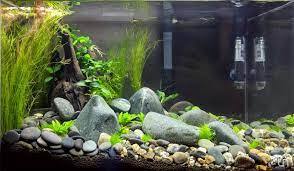
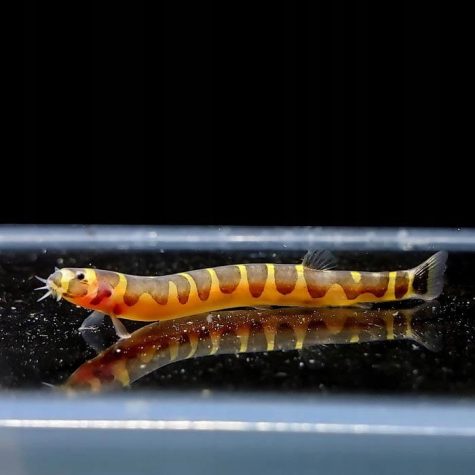
For fish life, I think that a couple kuhli loaches would fit in wonderfully. Kuhli loaches are small, eel-like fish that need plenty of hiding spots. They may hide for much of the day, but are amazing to see swimming. If you have a larger tank, consider introducing your favorite species of tetra. Tetras are great because they are small, active, and will swim in the middle to upper area of the tank.
2. Alien Planet
This design is inspired by the floating islands in Avatar. A very interesting design concept is to anchor lightweight rocks to the back wall of the tank so that they appear to ‘float’. The rocks can be attached with superglue or suction. Certain types of plants called aquatic epiphytes can be planted directly on underwater rocks. Epiphytes like riccia fluitans and anubias would make your alien planet come to life. Here is an example of the floating rock design:
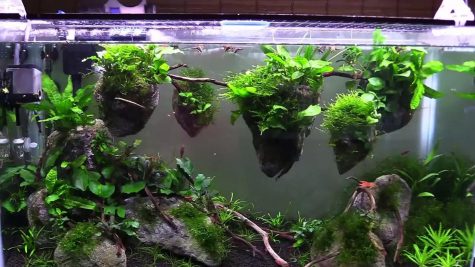
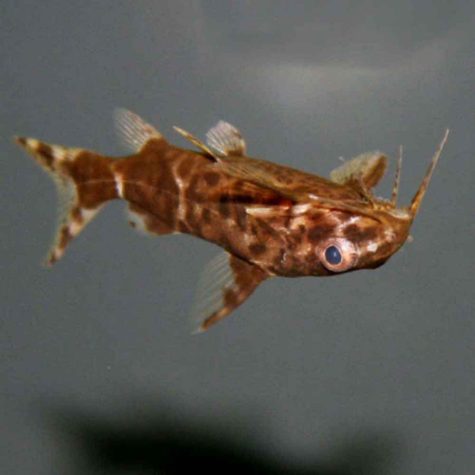
When it comes to fish, what is more alien-like than swimming upside-down? The upside-down catfish is an African catfish that has adapted to swim completely upended. This adaptation helps them swim with less drag at the surface of the water and breathe in the thin layer of surface water, which contains the highest concentrations of oxygen. This allows the fish to live in very shallow and stagnant bodies of water where hypoxia (oxygen depletion) would kill most other species.
Decorate the bottom of the tank with any fun decorations or live plants that you like. I would fill the bottom with black or red substrate to make the tank look unique or to resemble an alien planet.
3. Underwater Rainforest
For this design, tall freshwater plants dominate the scenery of the aquarium. Tall green plants such as Asian abulia, Amazon sword, Italian vallisneria, and ludwigia repens form a green backdrop for colorful fish in the tank. When planting many plants in an aquarium, it is important to fill the tank with ample substrate (soil) and to periodically add supplements to the water to keep the plants healthy. Here is a great example of a live plant backdrop:
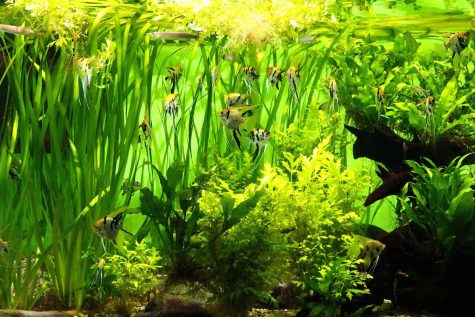
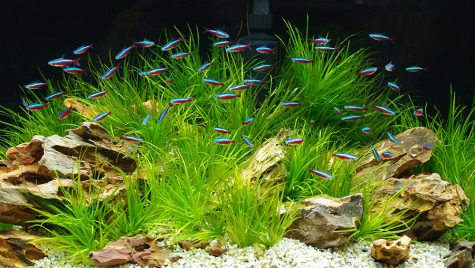
Small aquatic animals add color and movement to a green background, resembling the natural scene in a pond or river. In this tank, any species of fish will look great, but make sure they are colorful, so that they stand out. Neon tetra are a great option because they have bright colors, form schools, and are very easy to care for. Other colorful fish include Killifish, Betta fish, Fancy Guppies, and Harlequin Rasboras.
Snails and shrimp are also great in green aquariums because they will eat algae right off of the plants. They keep your tank clean and will usually live peacefully with your other fish. Cherry shrimp are great because they are small, active, and their red shells stand out against a green background. Freshwater snail species include nerite, ramshorn, and mystery snails because they will keep your tank clean without eating the plants themselves.
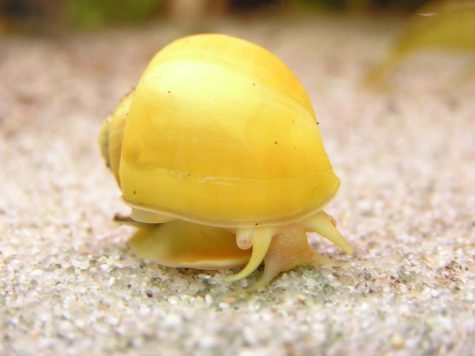
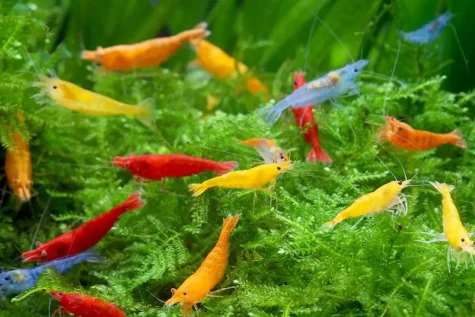
Before running out to Petco and buying an aquarium and fish, there are a few important things you need to know.
- Price: Fish tanks are expensive. The cost of the tank, filter, heater, feed, and supplements can add up. That isn’t even considering the price for certain fish and plants that may need to be delivered. It is important to plan out purchasing before starting.
- Care: New tanks take loads of time and effort to care for. It may take weeks before you can put fish in an aquarium once it is designed. Researching how to care for your fish and plants is necessary to keep your aquarium alive and healthy.
- Problems: Fish tanks are unpredictable. Bacteria growth, temperature changes, aggressive and dryland-seeking fish are bound to cause issues at some point in time. Problems occur in every aquarium, so all one can do is learn from each crisis to prevent another from happening.







